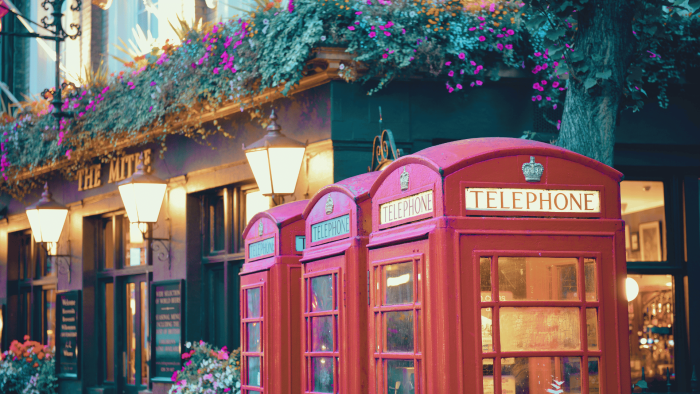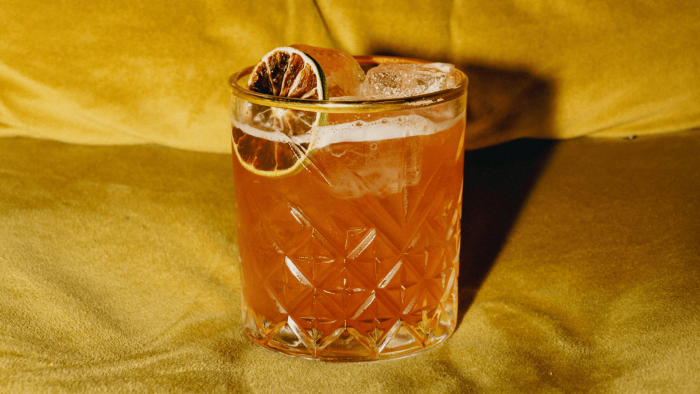We’re going to take you through the history of cologne, but we wanted to start with a caveat. The history of personal fragrances is a rich person’s history. Perfumery has always cost an enormous amount of time and resources, so most of us regular people would have been walking around doing the best we could with river water and a handful of herbs. Undoubtedly there were some smart peasants who had a homebrewing sort of handle on science and could whip something up. But they’re likely not the majority. It’s a trend that holds today. Fragrances are way cheaper than they used to be, thanks to industrialization. But even with those advances, we expect to pay a premium for the best cologne and perfumes.
That said, humanity’s obsession with smelling good spans millennia. We’ve been messing with herbs, spices, resins, pastes, oils, and incense since we realized some things smell better than others. If nothing else, it makes potential mates stand much closer to us.
Here’s the winding history of colognes and perfumes.
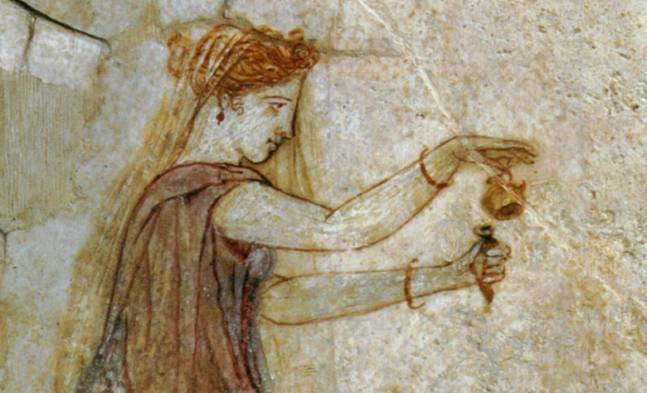
Incense, Perfume, and Cologne: The Next Best Thing to Ancient Bathing
When it comes to smelling good and feeling clean, bathing is always the preferable choice between perfuming and bathing. Bathing maintains a high level of personal hygiene and actively fights the spread of diseases. Plus, it keeps you looking and feeling good. But bathing, at least the way we think of it with our soaps and shampoos and conditioners and exfoliants and moisturizers, was unachievable to most people for the vast majority of human history. Even the most basic version, where you splash around in a river or a lake with a bar of soap, was a pipe dream.
That sounds crazy given how simple soap seems and how widely available it is today, but remember, we’re living in a post-Industrial Revolution world. Those mass production methods that made so many household goods more accessible did the same thing to soap. Before that production boom, you had to make soap yourself using disgusting and dangerous ingredients that were usually worse than the mess you were cleaning. Assuming you’re a reasonable person and can’t be bothered to make a dangerous, repulsive goop to clean up the little bit of grime on your body, you’d be left with our ancestors’ same fix. The good news is making and using perfume is way, way easier than making soap.
The Rise of Incense
Perfumes have had a few different forms over the centuries. The earliest currently known to archaeologists is Mesopotamian incense made from different resins or woods roughly 6,000 years ago, though there is written evidence of Sumerian priests also using scented oils. Incense was restricted to religious ceremonies and different scents represented different deities. It was believed the incense was able to close the distance between man and god. As for personal use, it’s reasonable to speculate average people had some way to perfume themselves, but there isn’t much in the way of archaeological evidence.
Perfume Takes Off in Egypt
Incense moved from Mesopotamia into Egypt, where Egyptians adopted it with a cultural fervor usually reserved for British bands coming to a Cold War-era United States. They experimented with everything that had an even remotely pleasant scent and threw enormous amounts of time and resources into perfumes. One of the concoctions whose recipe survived to today is called kyphi and is a mixture of 16 ingredients that were ground, soaked, and heated into a paste, which could be applied to the body or added to coals as an incense. Then they threw further time and resources into artistic renderings of them making perfume, like a carving from 600 BCE that shows the creation and presentation of a lily-based perfume by bare-breasted women.
Egyptians sent their enthusiasm for perfume and technological improvements back into Mesopotamia and all around the Mediterranean. They stored perfume in glass bottles, which made their way back into Arabia and Persia, where Persian and Arab chemists recorded methods and recipes, then spread even farther afield. In Cyprus roughly 4,000 years ago, Egyptian influence had the people create a perfume factory, where workers used olive oil to extract fragrances from plants.
The Spread of Perfume in Greece and Rome
Some sources claim ancient Greeks were the first to turn perfume into a wearable liquid. That claim seems dubious to us, given what was discovered in Egypt. What seems a little more accurate to say is that the Greeks really leaned into the bodily application of perfume while also demystifying fragrances. Theophrastus wrote Concerning Odors, a precursor to modern botany textbooks, and Hippocrates, the father of medicine, focused on aromatherapy as a medical treatment. Upper crust Greek men and women both followed the cult of the body, with public and private displays of perfume application.
Romans took Greek perfume ideology and did what they did to everything else. They made it bigger. It got to the point that Emperor Nero installed perfume-specific plumbing in his palace so he could douse his guests in rosewater. He also accidentally killed a guy with an avalanche of rose petals. It was that kind of decadence that destroyed the Roman empire and brought European perfumery to a screeching halt for a few hundred years.
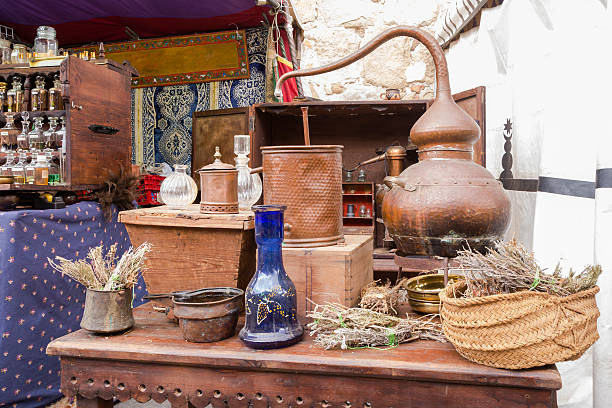
Muslim Scientists Reinvent Perfume
Around the same time the wheels were really coming off the Roman empire, Muslims were getting their shit together in a big way. They kicked off their own golden age in the 8th century, which ushered in transformational discoveries in any and every field known to man at the time. They pumped out innovation until the 16th century, when internal divisions made decline inevitable. But, in those eight hundred years, one of the things they invented was distillation. The Persian alchemist Abu Musa Jabir ibn Hayyan (Jabir for short) is generally credited with the invention of the alembic still, among many, many, many other achievements.
The alembic still enabled a cleaner, more refined approach to perfume production. Instead of infusing oils and messing around with pastes and incense, alchemists could use the still to quickly and easily capture essential oils. All they had to do was put together a mix of herbs, flowers, spices, and other sources, and send water vapor through the mix. It was condensed and captured on the other end, now enriched with essential oils. We all know the old adage about oil and water, so it follows that skimming the scented oils off the top of the water is a relatively simple task. A variation on this method would have been to incorporate some kind of weak alcohol into the mix, which would also explain the origins of consumable spirits. This cleaner product gave the Persians a stranglehold on the perfume trade for a few hundred years, sending the influence of the Islamic Golden Age right into people’s nostrils.
Perfume Returns to Europe
Crusaders returning from Arabia brought Persian perfume and its production methods back with them. These new water- and alcohol-based perfumes started to replace European pomanders, balls of fragrance meant to ward off disgusting odors and diseased air, and reinvigorated an industry that had been dead since the collapse of the Roman empire nearly a millennium before.
The first product this industry produced was called Hungary Water, Europe’s first alcohol-based perfume and made for the queen of Hungary in the 14th century. Those are also about the only two facts known about Hungary Water. Historians don’t know who made it, what the recipe was, what it was made for (whether as a perfume or a perfume/medical treatment hybrid), or even which queen they meant. But for all the uncertainty, Hungary Water dominated the European perfume trade for roughly three and a half centuries.
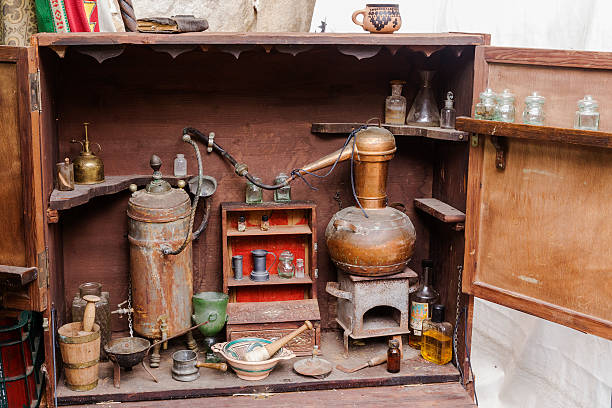
Aqua Mirabilis in Medieval Cologne
A whole branch of the perfume story veers off around this time and follows Catherine de Medici to France. She and her profumiere, Renato Bianco, also known as Rene the Florentine, are almost singularly responsible for the entire French fragrance industry. But since that’s not cologne, let’s get back to what is.
The Rise of Cologne
Giovanni Paolo Feminis was born in the Italian Alps in 1666, but he didn’t stay there. He moved to Cologne, in modern-day Germany, and established his own distillery-herbalist shop. He built a reputation for himself in his new hometown by personalizing perfume recipes he’d received from monks, who were themselves substantially responsible for the success of Italian perfumery, though their approach emphasized more of the purported medical benefits of aromatherapy. In the course of his career, Feminis developed a distillation method that allowed him to create perfumes that were 95 percent alcohol-based. Such a high level of alcohol distillate meant he was able to create scents that were much lighter and fresher than the oil- and water-based products that came before. His products were known as Aqua Mirabilis, which loosely translates to “wonderful” or “admirable water”.
When Feminis got too old to keep the business running, he invited his nephew, Giovanni Maria Farina, over from Italy to take over. Farina proved as capable as his uncle, tweaking a few of the established recipes and stumbling on a new scent that floored him. In a letter to his brother, he tried to describe the scent, saying, “My perfume is reminiscent of a beautiful spring morning after the rain. It is made of oranges, lemons, grapefruit, bergamot, flowers and fruits from my native country…It refreshes me while stimulating my senses and my imagination.” He renamed this scent Aqua Mirabilis di Colonia and spent most of his life spreading the product throughout Europe.
Part of marketing at that time seemed to be pandering to the gentry’s interest. As such, Farina changed his name to the much more French Jean-Marie Farina and his product’s name to Admirable Eau de Cologne, which itself was eventually shortened to Eau de Cologne. It became so popular so quickly that it seems to have gotten the Band-Aid treatment. It was a specific brand or product name that was so widespread, that it became its own generic name.
You can still buy it, too.
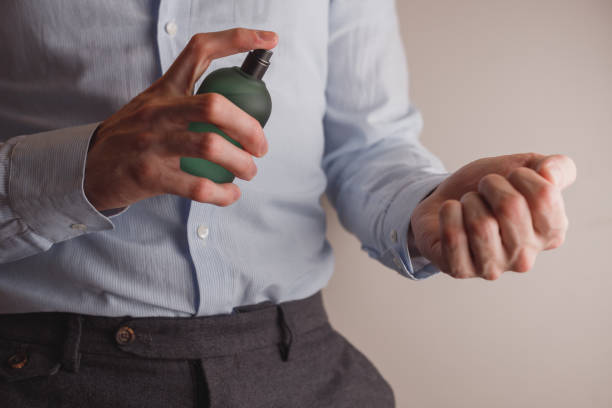
The Scent of Modern Man
Like most other things, modern cologne’s perception has been significantly warped by post-war marketing. All those scents we’ve been talking about the whole time were unisex, for all intents and purposes. For example, take a second look at Farina’s quote about his fragrance. A bunch of the scents he’s bragging about are things we might consider feminine. The modern distinction between perfume and cologne is arbitrary, with cologne originally referring to anything that came out of Cologne, Germany. That means that the Mad Men swagger some guys carry themselves with is essentially unearned; modern men should remember that there’s nothing inherently masculine about cologne versus perfume.
The thing that’s been surprisingly consistent with Renaissance and Enlightenment Europe’s cologne is function, cost, and social usage. If you’re wearing cologne you want to smell good, you’ve probably spent a decent amount on it, and you’re probably doing something important. We find a bit of comfort in that consistency. There’s a primal part of us that knows we’re supposed to be clean and smell good, and we’ve been trying to achieve that for millenia.



